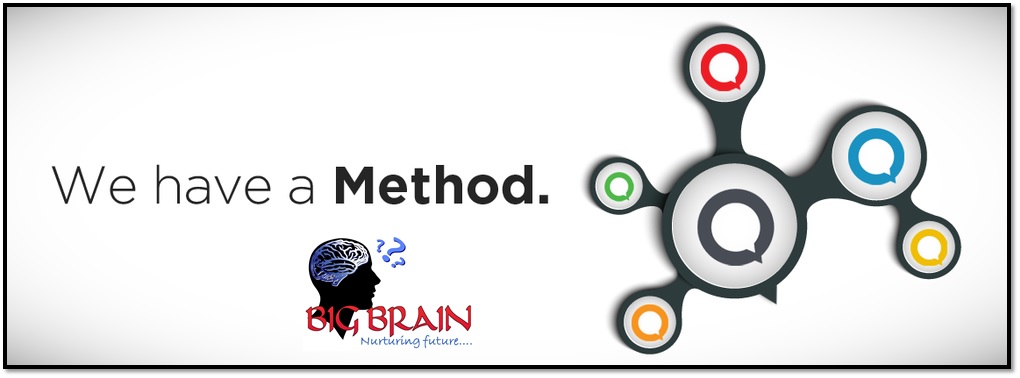Methodology
Big Brain believe that adult learning is most effective when presented in a relevant context so that the skills, strategy, and knowledge are meaningful to participants and can be applied directly in the training. Therefore, our design philosophy is to customize our core programs using our effective and efficient proprietary customizing process and tools. We incorporate participants’ real-world challenges, sales tools, and processes into developing cases/exercises.
Our training methodology is based on the premise that participants/adults are not blank slates, and we utilize a process of questioning and generating a dialogue before presenting concepts and models. By doing this vs. lecturing, we gain participant involvement and buy-in before we build models and teach learning points. Here are some common methods used by corporate training companies:
- Classroom Training:
- Traditional instructor-led training (ILT) sessions conducted in a physical classroom setting.
- Ideal for hands-on activities, group discussions, and real-time feedback.
- Promotes direct interaction between trainers and participants.
- E-Learning:
- Online courses and modules that can be accessed anytime, anywhere.
- Includes multimedia content such as videos, quizzes, and interactive simulations.
- Allows self-paced learning and flexibility.
- Blended Learning:
- Combines classroom training with online learning to create a comprehensive training experience.
- Balances the benefits of face-to-face instruction with the convenience of e-learning.
- Enhances learning retention through varied delivery methods.
- Webinars and Virtual Classrooms:
- Live or recorded online sessions that can be attended remotely.
- Facilitates real-time interaction with trainers through Q&A and discussion forums.
- Cost-effective and accessible for geographically dispersed teams.
- Workshops:
- Intensive, interactive sessions focused on specific skills or topics.
- Encourages active participation, collaboration, and hands-on practice.
- Typically shorter in duration but highly focused and practical.
- On-the-Job Training (OJT):
- Employees learn by performing their job tasks under the guidance of experienced colleagues or supervisors.
- Provides practical, real-world experience and immediate application of skills.
- Ideal for roles that require specific technical skills or processes.
- Coaching and Mentoring:
- Personalized, one-on-one guidance from experienced mentors or coaches.
- Focuses on individual development, goal setting, and career progression.
- Offers continuous support, feedback, and encouragement.
- Simulations and Role-Playing:
- Interactive exercises that mimic real-world scenarios and challenges.
- Helps employees practice skills and decision-making in a safe, controlled environment.
- Useful for training in areas like customer service, sales, and crisis management.
- Gamification:
- Incorporates game elements such as points, badges, and leaderboards into training programs.
- Enhances engagement and motivation by making learning fun and competitive.
- Encourages participation and knowledge retention.
- Microlearning:
- Delivers training content in short, focused bursts (e.g., 5-10 minute modules).
- Easy to digest and integrate into daily routines.
- Ideal for reinforcing key concepts and providing quick, just-in-time learning.
- Learning Management Systems (LMS):
- Platforms that organize, deliver, and track training programs and progress.
- Centralizes training resources, materials, and assessments.
- Provides analytics and reporting to measure training effectiveness.
- Social Learning:
- Leverages social media and collaborative platforms to facilitate peer-to-peer learning and knowledge sharing.
- Encourages employees to engage in discussions, share insights, and learn from each other’s experiences.
- Fosters a community of continuous learning and support.
- Mobile Learning:
- Training programs accessible via smartphones and tablets.
- Supports learning on-the-go and flexibility in accessing training materials.
- Includes apps, mobile-friendly e-learning modules, and bite-sized content.
Implementing Effective Corporate Training Methods:
- Needs Assessment:
- Conduct thorough assessments to identify the specific training needs and skill gaps within the organization.
- Tailor training methods to address these needs effectively.
- Customization:
- Customize training programs to align with the organization’s goals, culture, and industry requirements.
- Ensure relevance and applicability to the learners’ roles and responsibilities.
- Engagement and Interaction:
- Incorporate interactive elements and opportunities for active participation in all training methods.
- Use multimedia, discussions, and hands-on activities to enhance engagement.
- Feedback and Evaluation:
- Implement mechanisms for continuous feedback and evaluation of training effectiveness.
- Use assessments, surveys, and performance metrics to gather insights and make improvements.
- Scalability and Flexibility:
- Design training programs that can be scaled and adapted to meet the evolving needs of the organization.
- Offer flexible delivery options to accommodate different learning preferences and schedules.
- Continuous Improvement:
- Regularly update and refine training methods and content based on feedback, technological advancements, and industry trends.
- Foster a culture of continuous learning and improvement within the organization.
Conclusion:
Corporate training companies utilize a diverse array of methods to deliver effective and engaging training programs. By leveraging a combination of traditional, digital, and innovative approaches, these companies can meet the unique needs of organizations and learners. The key to success lies in customization, engagement, and continuous improvement, ensuring that training solutions remain relevant, impactful, and aligned with organizational goals.

